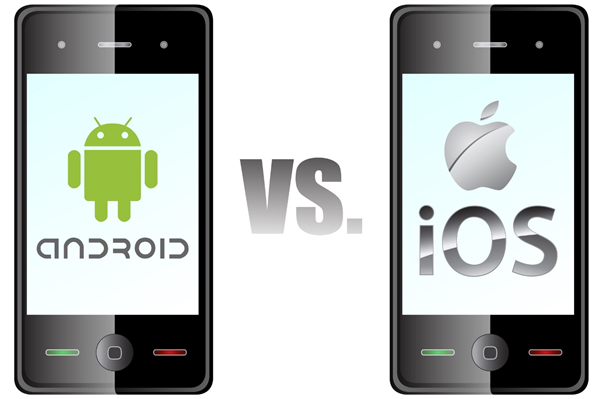What is mobile application development?
Mobile application development is a procedure in which software application is created for mobile devices. The mobile application employs a network connection to operate with remote computing resources. In simple words, the mobile development process entails creating installable software, execution of backend services like data access with an Application Programming Interface and testing the application on end devices.

Source: Copyright © 2021 Kalkine Media Pty Ltd.
About Device Platforms
By now, we are somewhat acquainted with the mobile application development terminology. Now let us understand the two platforms in the present smartphone market. These are:
- iOS platform
- Android from Google.
iOS platform is the OS that powers Apple’s flagship product – the iPhone. While iOS is used only in Apple devices, the android operating system (OS) is used by both Google and other original equipment manufacturers (OEMs) to build their smartphones and other smart devices.
If you look closely, both platforms are similar in terms of building an application. However, the difference comes in their software development kits. While Apple uses iOS specifically for its devices, Google makes Android available to other companies if it meets specific requirements.
What are the different approaches to building mobile apps?
There are four key methodologies to build mobile applications:
Native Mobile Applications
Native Mobile Applications are those written in the programming language and framework that the platform owner offers. These applications run on the operating system of devices like iOS and Android.
Cross-Platform Native Mobile Applications
While creating Cross-Platform Native Mobile Applications, coding can be done in various programming languages. However, they are compiled into native applications that run on the OS of the device.
Hybrid Mobile Applications
Hybrid mobile apps are developed using standard web tools and are clubbed as app installation packages. These applications are created using JavaScript, CSS and HTML5. Hybrid mobile applications operate on a web container, which offers a browser runtime along with a link for native device API (application programming interface) through Apache Cordova.
Progressive Web Applications
Progressive Web Applications are web applications that use a set of browser features like working offline, running background process etc., providing an app-like user experience.
What are the two most popular mobile operating systems?
The two popular mobile operating systems in the present times are iOS and Android.

Source: © Mrhighsky | Megapixl.com
iOS Operating System:
iOS operating system was built by Apple, which uses a graphical user interface similar to the desktop operating system. When this operating system was developed, the designing was done around touchscreen input instead of using additional devices like a keyboard and mouse.
Some of the features of the iOS Platform include:
- Multitasking
- Social Media
- iCloud
- Game Centre
- Accelerometer
- GPS
- High-end processor
- Bluetooth
- GPS
Android Operating System:
Android Operating System is an open-source Linus-based operating system for smart devices like smartphones and tablets. Android was formed by Open Handset Alliance. It was headed by Google & other businesses.
Android programming is done using java programming. Some of its features include.
- Android Operating System offers a beautiful and insightful user interface.
- Provides connectivity.
- It uses SQLite is a lightweight relational database that is used for gathering data.
- Provides SMS, media support and MMS facilities.
- Android operating system is multitasking. It lets the user switch from one task to another task.
- Users can type in multiple languages.
Mobile App Development Process
The mobile application development process is a six-step process. These are:
Strategy:
It is the first stage in the mobile app development process. In this, a strategy is defined based on the concept of a successful mobile application.
This phase involves identifying app users, researching the competition, setting goals and objectives, and selecting the app's mobile platform.
Analysis and planning:
In this phase, the idea of developing the app starts taking shape and turns into a real project. The analysis and planning phase involves defining use cases and capturing detailed functional requirements. Once the requirements are noted, then the product roadmap is prepared.
This phase also looks into the key skills needed for the development of the app.
UI/UX design:
UI/UX design provides users with an excellent user experience. It helps to make the app interactive, insightful and user friendly.
App Development:
As the name suggests, the process includes the development of the app. It is the fourth step in the app designing process and requires defining the technical architecture, picking a technology stack followed by defining the development milestone.
Testing:
Once the above stages get completed, testing phase begins where thorough quality assurance testing is done. The process ensures that application stability, usability and also checks whether it is secure or not.
For complete quality assurance, it is essential to have a test case that addresses app testing angles.
Deployment:
This phase involves releasing the native mobile app and then submitting the app to the app stores. Once the app gets submitted to the app store, it undergoes a review process which takes some time to check how well the application follows the app store guidelines.
 Please wait processing your request...
Please wait processing your request...